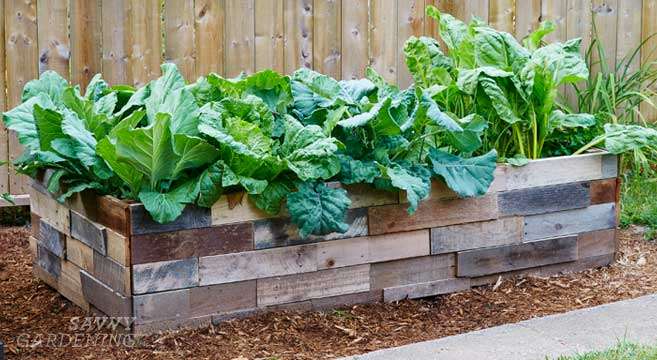Hi there! Today, we’ll be discussing whether raised beds need a floor. We’ll explore the concept of off-grid living and how it relates to gardening. By the end of this article, you’ll have a better understanding of whether raised beds should have a floor or not. So let’s get started!
Do raised beds need a floor?
When it comes to gardening, raised beds have become increasingly popular due to their numerous benefits. They provide better soil drainage, aeration, and can even deter pests. One question that often arises is whether or not raised beds need a floor. In this article, we will explore the advantages and disadvantages of using a floor in raised beds, alternative options, and factors to consider when making this decision.
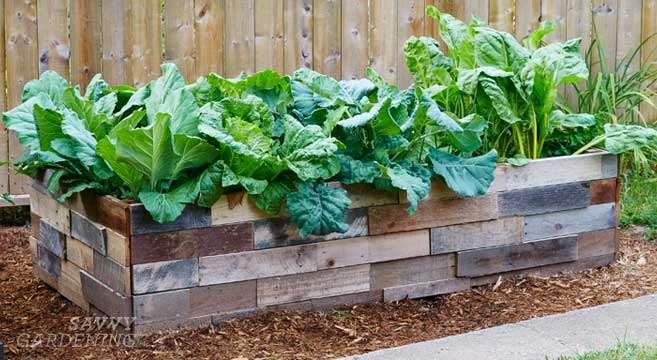
What are raised beds?
Before we delve into whether or not raised beds need a floor, let’s explore what raised beds actually are. Simply put, raised beds are garden beds that are elevated above the ground level. They are typically constructed with a frame made of various materials such as wood or metal and filled with soil. Raised beds have gained popularity among gardeners due to their versatility and ability to create optimal growing conditions for plants.
Definition of raised beds
Raised beds are garden beds that are constructed above the ground level. They are typically enclosed within a frame and filled with soil. Raised beds provide several advantages over traditional in-ground gardening, including improved soil quality, better drainage, and easier access for planting, weeding, and maintenance.
Benefits of using raised beds in gardening
There are numerous benefits to using raised beds in gardening. Some of the main advantages include:
- Improved soil quality: Raised beds allow for better control over the quality of the soil, as gardeners can choose the specific type of soil mixture to use. This is particularly beneficial if the natural soil in your garden is of poor quality.
- Better drainage: Raised beds provide excellent drainage, preventing the soil from becoming waterlogged, which can be detrimental to plant health.
- Easier access: Raised beds are elevated, making them more accessible to gardeners of all ages and abilities. This eliminates the need for excessive bending or kneeling, which can be difficult for individuals with physical limitations.
- Weed control: Raised beds can help control weed growth, as the elevated design limits the spread of weeds from the surrounding areas.
- Increased growing space: By using raised beds, gardeners can effectively maximize their growing space, as the soil is contained within a specific area. This allows for more efficient use of available space and facilitates crop rotation.
Now that we have a better understanding of raised beds, let’s explore whether or not they require a floor.
Reasons to use a floor in raised beds
While raised beds can be beneficial on their own, using a floor in your raised beds can provide additional advantages. Here are some reasons to consider using a floor in your raised beds:
Preventing weed growth
One of the primary reasons to use a floor in raised beds is to prevent weed growth. By placing a barrier between the soil in the raised bed and the underlying ground, you can significantly reduce the likelihood of weeds infiltrating your garden. This can save you time and effort in weed control, allowing you to focus more on planting and nurturing your desired plants.
Improving drainage
A floor in raised beds can improve drainage by preventing excessive water from seeping into the ground below. This is particularly useful in areas with heavy clay soil, which tends to retain water and can lead to waterlogged roots and root rot. With a floor, excess water is directed away from the plant roots, ensuring optimal growing conditions.
Protection from pests and rodents
The use of a floor in raised beds can also offer protection against pests and rodents. By creating a physical barrier, you can prevent creatures such as moles, rabbits, and other burrowers from accessing your plants’ roots. This can be especially beneficial if you live in an area with a high incidence of underground pests.
Now that we have explored the reasons to use a floor in raised beds, let’s discuss the different types of flooring options you can consider.
Types of flooring for raised beds
When it comes to choosing the flooring material for your raised beds, you have several options to consider. The following are some common types of flooring for raised beds:
Wooden flooring
Wooden flooring is a popular choice for raised beds due to its availability, cost-effectiveness, and ease of installation. Materials such as wood planks or plywood can be used to create a solid base for your raised bed. However, it is important to choose a type of wood that is resistant to rot and decay, such as cedar or redwood. These types of wood have natural preservatives that make them more durable and long-lasting.
Plastic or vinyl lining
Plastic or vinyl lining is another option for creating a floor in your raised beds. This type of flooring acts as a barrier between the soil and the ground, preventing weeds from growing through. Plastic or vinyl lining is easy to install and can be purchased in rolls or sheets from gardening supply stores. However, keep in mind that this type of flooring may not offer the same level of protection against pests and rodents as other materials.
Hardware cloth or wire mesh
For those concerned about pest intrusion, hardware cloth or wire mesh can be used as a flooring option for raised beds. This material acts as a physical barrier, preventing pests from burrowing up into the bed. It also allows for good drainage and aeration of the soil. However, keep in mind that small pests may still be able to squeeze through the gaps in the mesh, so it may not be completely foolproof.
Now that we have discussed the different types of flooring options for raised beds, let’s explore some important considerations when using a floor.
Considerations when using a floor in raised beds
Before you decide to use a floor in your raised beds, there are a few important considerations to keep in mind. These include:
Choosing the right material
When selecting the flooring material for your raised beds, it is essential to choose a material that is durable and long-lasting. Consider factors such as resistance to decay, availability, and cost-effectiveness. Additionally, think about the specific needs of your plants and the climate in which you are gardening. For example, if you live in a hot and humid climate, you may want to choose a material that can withstand high moisture levels without deteriorating.
Preparing the surface
Before installing a floor in your raised beds, it is important to prepare the surface beneath the bed. Ensure that the ground is level and free from any rocks, debris, or plant matter. This will provide a stable and even foundation for your raised bed, preventing any shifting or unevenness.
Ensuring proper aeration and water drainage
While a floor can improve drainage, it is crucial to ensure that your raised bed still has proper aeration and water drainage. This can be achieved by incorporating drainage holes or gaps in the floor material. Without proper aeration and drainage, the soil in your raised bed can become compacted and waterlogged, leading to root rot and other plant health issues.
Now that we have discussed the considerations when using a floor, let’s explore the advantages and disadvantages of not using a floor in raised beds.
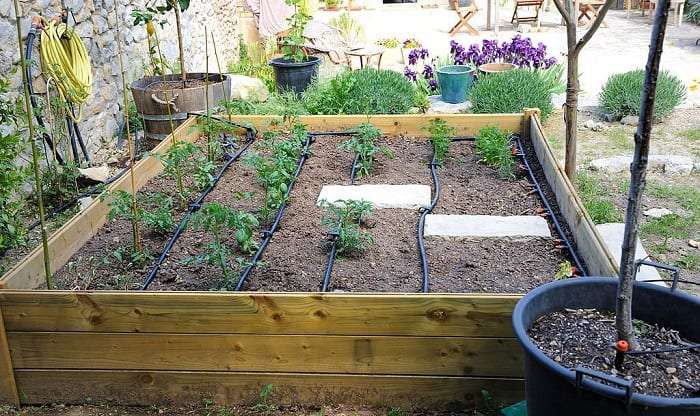
Advantages of not using a floor in raised beds
While using a floor in raised beds can offer numerous benefits, there are also advantages to leaving the floor open. Here are some advantages of not using a floor in raised beds:
Allows natural soil interaction
By not using a floor in your raised beds, you allow your plants’ roots to interact directly with the natural soil beneath. This can be beneficial in certain circumstances, especially if the natural soil in your garden is of high quality. The roots can tap into the nutrients and microbial life present in the ground, enhancing plant growth and overall soil health.
Promotes soil biodiversity
When the roots of your plants can reach the natural soil, it encourages better soil biodiversity. The natural ground is home to a wide array of beneficial microbes, insects, and organisms that contribute to soil fertility and plant health. Allowing your plants to interact with the natural soil can help create a thriving ecosystem within your raised beds.
Simplifies bed construction and maintenance
Not using a floor in raised beds simplifies the bed construction process. Without the need to install a barrier, constructing the raised bed is quicker and requires fewer materials. Additionally, without a floor, you eliminate the need to replace or repair damaged flooring, saving you time and money on maintenance.
While there are advantages to not using a floor in raised beds, there are also potential disadvantages to consider. Let’s take a look at some of these disadvantages.
Potential disadvantages of not using a floor in raised beds
Alongside the advantages, not using a floor in raised beds can also present some potential disadvantages. These include:
Weed growth concerns
One of the main concerns with not using a floor in raised beds is the potential for weed growth. Without a physical barrier, weeds from the surrounding area can infiltrate your garden bed, competing with your desired plants for nutrients, water, and sunlight. This can increase the time and effort required for weeding, potentially impacting the overall health and productivity of your plants.
Reduced control over soil quality
Not using a floor in your raised beds means that you have less control over the quality of the soil. Depending on the natural soil in your garden, this may or may not be a concern. If the soil in your garden is of poor quality, using a floor and filling the bed with good-quality soil can significantly improve plant growth. Without a floor, you are limited to the existing soil, potentially limiting the success of your garden.
Risk of pest and rodent intrusion
By not using a floor in your raised beds, you increase the risk of pest and rodent intrusion. Without a physical barrier, creatures such as slugs, snails, and rodents can easily access your plants and cause damage. This can be particularly problematic in areas with high pest activity or if you are growing plants that are particularly vulnerable to pest damage.
Now that we have discussed the advantages and disadvantages of not using a floor in raised beds, let’s explore some alternative options.
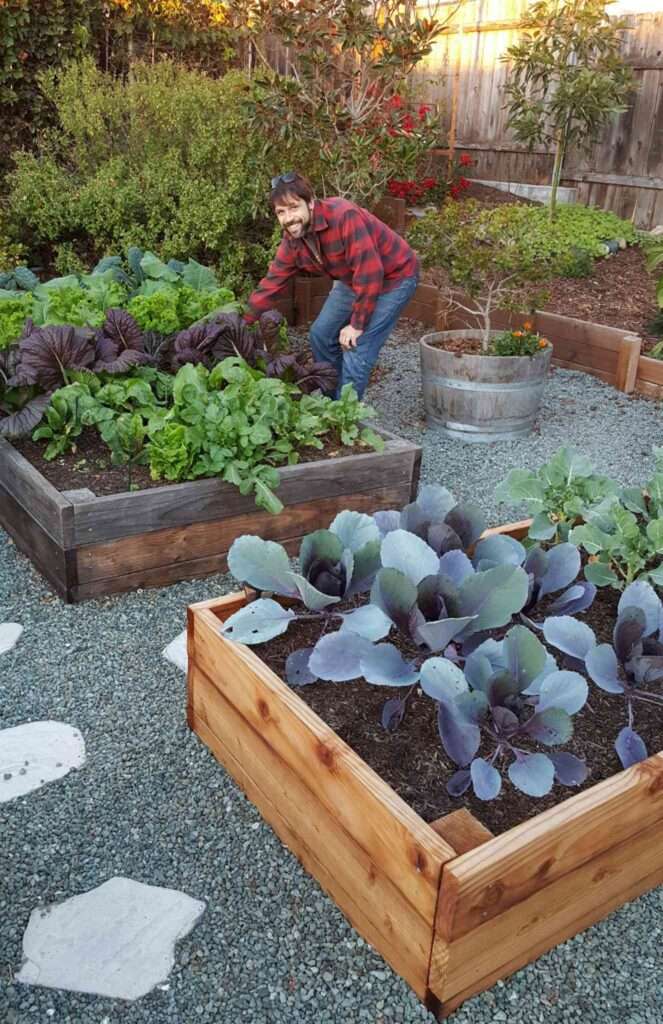
Alternative options to using a floor in raised beds
If you are hesitant to use a floor in your raised beds but still want to address some of the potential disadvantages, there are alternative options you can consider. These include:
Raised bed liners
Raised bed liners are an alternative to a solid floor. They can be made from materials such as landscape fabric or geotextile fabric, which can be laid at the bottom of the raised bed. These liners can help prevent weed growth from the underlying soil while still allowing for good drainage and aeration.
Mulching the base
Another option is to mulch the base of your raised beds. By adding a layer of mulch, such as wood chips or straw, you can create a barrier that helps reduce weed growth while still allowing your plants’ roots to interact with the natural soil beneath.
Using weed barriers
Weed barriers, such as woven or non-woven fabrics, can be placed between the natural soil and the raised bed. These barriers block weed growth while still allowing for water drainage and aeration. Weed barriers are commonly used in combination with a floor or liner, but they can also be used on their own if you are not using a floor in your raised beds.
Now that we have explored alternative options, let’s discuss some important factors to consider when deciding whether or not to use a floor in raised beds.
Factors to consider when deciding whether to use a floor in raised beds
The decision of whether or not to use a floor in your raised beds will depend on several factors. Consider the following when making your decision:
Climate and weather conditions
The climate and weather conditions in your area can significantly impact the success of your plants and the overall health of your garden. If you live in an area with heavy rainfall or high humidity, using a floor in your raised beds may help improve drainage and prevent waterlogged soil. On the other hand, if you live in an arid region, the natural soil below your raised beds may benefit from direct interaction with your plants’ roots.
Garden location and surroundings
The location of your garden and the surrounding environment can also influence whether or not you should use a floor in your raised beds. If you have a garden situated near weedy or overgrown areas, using a floor can help prevent weed infiltration. Similarly, if you live in an area with a high incidence of underground pests or rodents, a floor can provide added protection for your plants.
Personal gardening preferences
Ultimately, your personal gardening preferences should also be considered when deciding whether or not to use a floor in your raised beds. If you prefer a more natural and low-maintenance approach, not using a floor may be the best option for you. However, if you value the ability to control soil quality, prevent weed growth, or protect your plants from pests, using a floor or alternative option may be more suitable.
With these factors in mind, you can make an informed decision that best suits your gardening needs and circumstances.
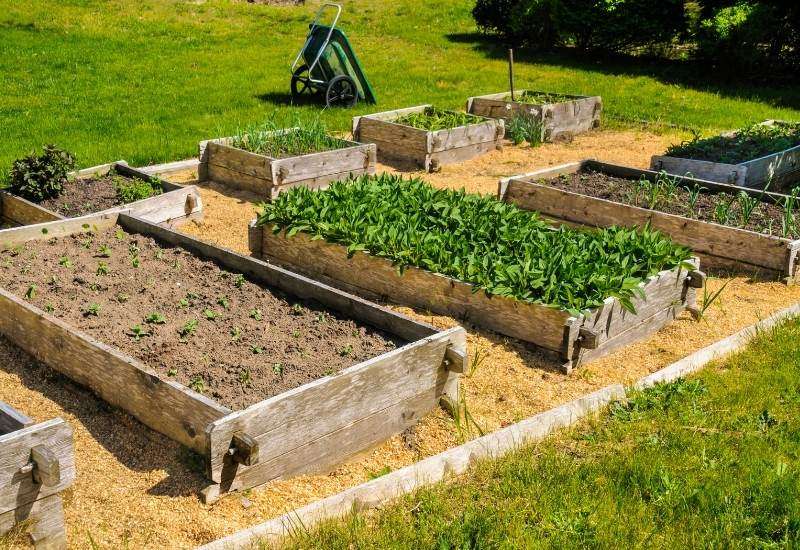
Tips for maintaining raised beds with a floor
If you have chosen to use a floor in your raised beds, here are some tips for maintaining them:
Regular cleaning and removal of debris
Regularly clean and remove any debris from the surface of your raised bed floor. This will prevent the accumulation of organic matter that can create a favorable environment for pests, disease, and weed growth.
Proper water drainage management
Ensure that your raised bed floor has proper drainage holes or gaps to prevent water from pooling. Excess water can lead to root rot and other plant health issues. Monitor the moisture levels in your raised beds and adjust watering accordingly to prevent overwatering.
Repairing or replacing damaged flooring
Inspect your raised bed floor regularly for any signs of damage, such as rotting wood or tears in a liner. Repair or replace any damaged flooring to maintain the integrity of your raised beds. This will help extend the lifespan of your raised beds and ensure optimal growing conditions for your plants.
Tips for maintaining raised beds without a floor
If you have chosen not to use a floor in your raised beds, here are some tips for maintaining them:
Weeding and managing weed growth
With open-bottom raised beds, weed management becomes even more critical. Regularly inspect your raised beds for any signs of weed growth and promptly remove any weeds. Mulching the base of your raised beds can also help suppress weed growth and reduce the time and effort required for maintenance.
Regular soil amendment and nutrient replenishment
Without a floor, your raised beds rely on the natural soil beneath for nutrients. Regularly amend the soil in your raised beds with compost, organic matter, or other suitable fertilizers to replenish nutrients and maintain soil fertility. This will help ensure healthy plant growth and productivity.
Implementing natural pest and rodent deterrents
To protect your raised beds from pests and rodents, consider implementing natural deterrents. This can include measures such as companion planting, using physical barriers, or attracting beneficial insects that can help control pest populations. Research natural pest control methods that are suitable for your specific gardening needs and environment.
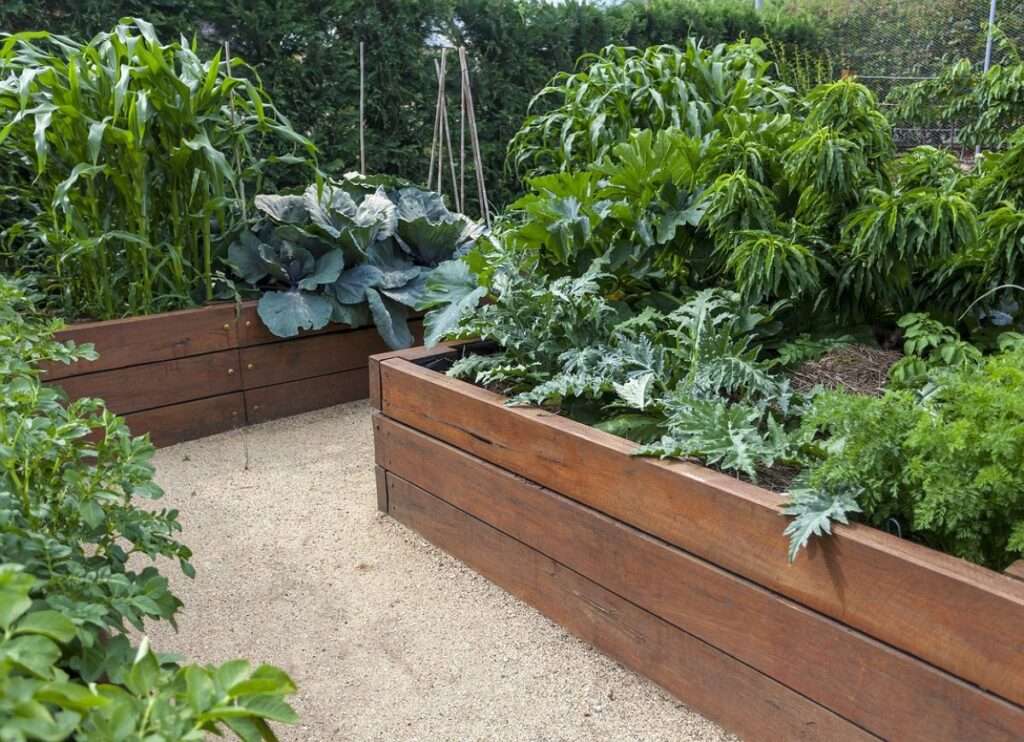
Expert opinions on using floors in raised beds
There is a range of expert opinions on the necessity of a floor in raised beds. Some experts argue that the use of a floor can help prevent weed growth, improve drainage, and protect against pests and rodents. Others believe that raised beds without a floor allow for better interaction between plant roots and the natural soil, promoting soil biodiversity and simplifying bed construction and maintenance.
When considering expert opinions, it is important to take into account specific environments and gardening practices. Factors such as climate, soil conditions, and personal preferences can significantly impact the decision of whether or not to use a floor in raised beds.
Conclusion
In conclusion, the decision of whether or not to use a floor in raised beds ultimately depends on your specific gardening needs and circumstances. Using a floor can help prevent weed growth, improve drainage, and protect against pests and rodents. However, not using a floor allows for natural soil interaction, promotes soil biodiversity, and simplifies bed construction and maintenance.
Consider the advantages and disadvantages of using a floor, alternative options, and factors such as climate, garden location, and personal preferences. By weighing these factors and making an informed decision, you can create a raised bed garden that suits your gardening style and maximizes the potential for healthy and productive plants. Happy gardening!

